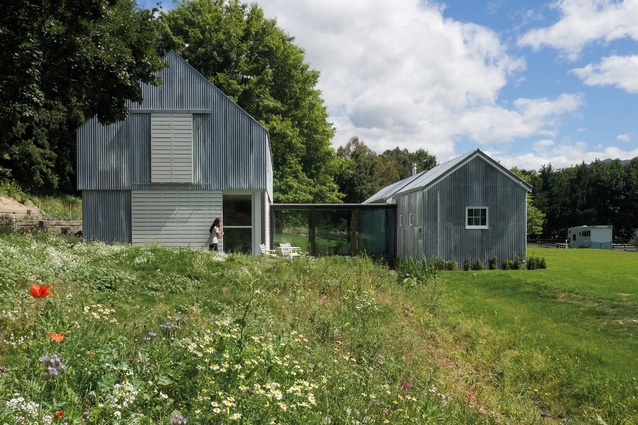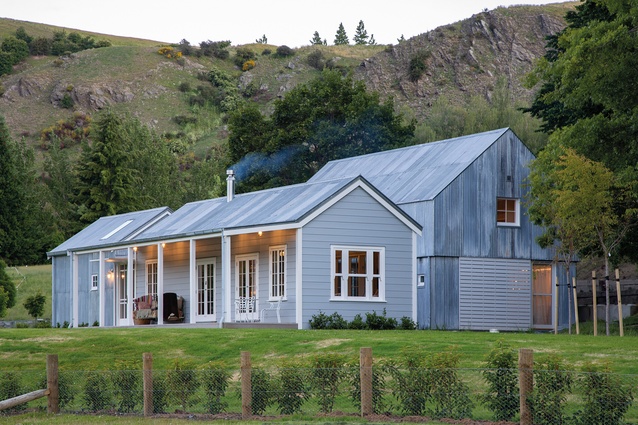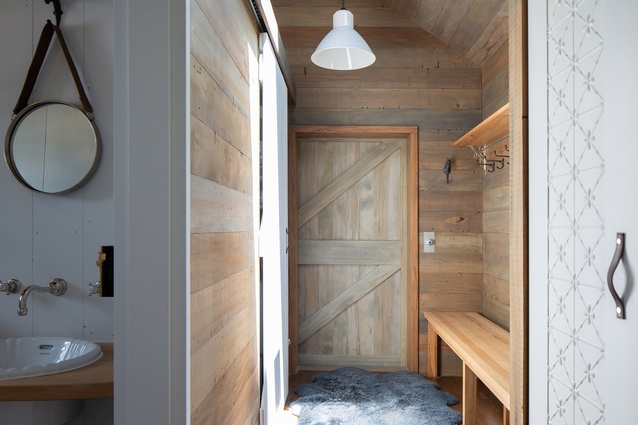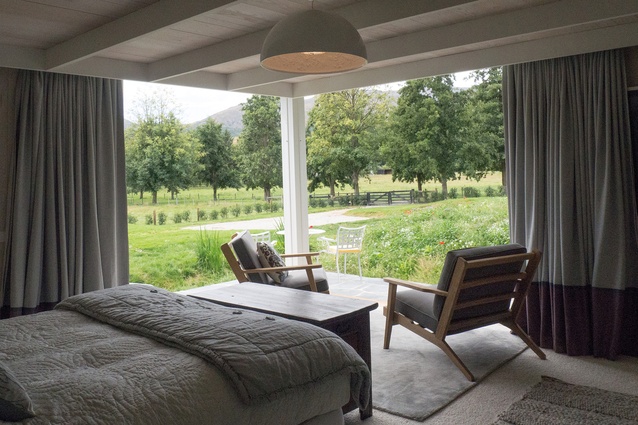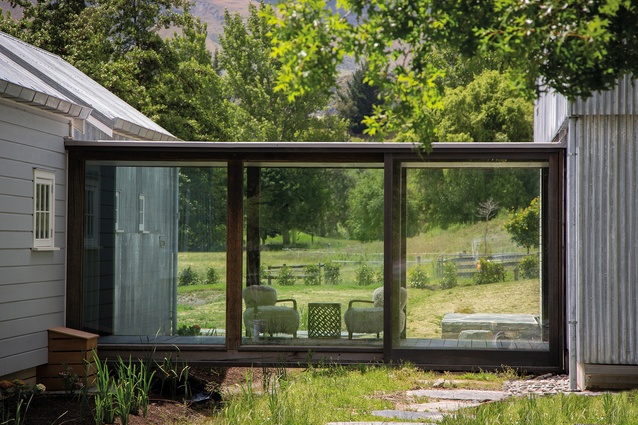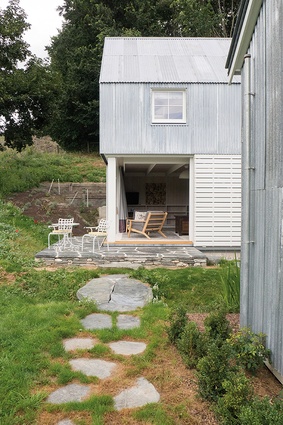Old new and new old: Lake Hayes Cottage
Jeremy Smith considers the compelling proposition of re-use in this poetic preservation of a South Island cabin by Anna-Marie Chin Architects.
From afar, it is sometimes hard to believe that Queenstown is real. The Remarkables really are remarkable, the sky and vistas huge, the landscape beautiful. Throw in all those new and ready to publish cedar-schist-and-glass houses with exquisite furniture and, to those of us elsewhere, it can feel a bit like an Instagram feed.
Increasingly, it seems smaller houses are making their way into our remote view of southern life. There is beauty in small, and especially so in Central Otago, where it would take a Herculean effort to make anything half as epic as the landscape. We can all picture small gold mining cabins, holiday cribs furnished with Monopoly and hopefully a blanket, those rural sheds that Grahame Sydney paints in the wonderfully clear, low light. These buildings don’t necessarily carry all the architectural bells and whistles, but they are real nonetheless. It is that sort of landscape – the big is so big that sometimes it helps to be small.
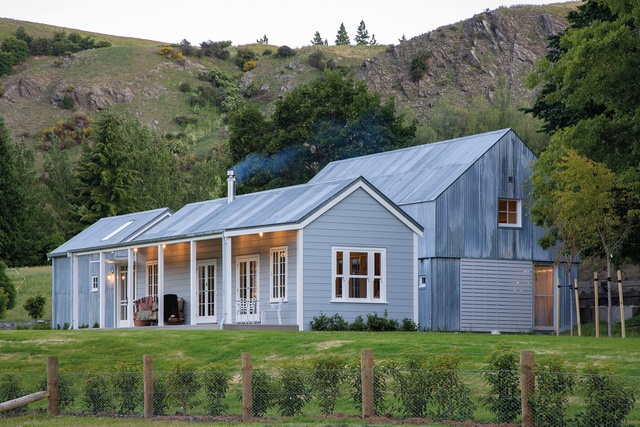
Yet, there is also a lesson in local. In a time when we are floating around in the South Pacific to hopefully ride out this pandemic, understanding more about where things come from is becoming the norm. That not everything can, nor should, come on a boat, let alone a plane, is pretty apparent.
The ‘Case for never demolishing another building’,1 put forward by writers like Oliver Wainwright, must be quickly gaining new chapters, spurred on by the separations in our lives currently. Re-use is all a question of timing and placement, and as much applicable to the unreal landscapes of Central Otago as anywhere else. Schist is, of course, local and ancient, timber less so, but all these new houses are in fact re-using old materials.
What is so interesting about the latest cabinwork to adorn Central Otago by Anna-Marie Chin Architects is that it mixes up this question of old looking old and new looking new and, instead, privileges the material stories from which buildings are constructed. It’s easy to become precious around the question of age, but Anna-Marie Chin suggests you can play with time and “intermingle things”; no boats or planes required.

Reading the room is not so easy when being introduced via Zoom. Finding out where we are seems a good place to start, but not such a simple question as it turns out. We are between Queenstown and Arrowtown at Lake Hayes, but there are three cabins here and one of them has had a few careers before arriving and being both extended and added to. Like a vagabond after the Gold Rush, this little building worked its way around Central Otago doing odd jobs, even having a go at a nunnery in Naseby.
Rem Koolhaas may not have been thinking of small cabins when he wrote Preservation is Overtaking Us, to suggest we start selecting what to preserve before we build.2 He surely had something more epic in mind but this old cabin has been restored and resettled all the same, complete with a bright new coat of paint. No problem, Koolhaas might say, the new will look newer, there will be no mistake; but doesn’t that depend on what you make new from?
Chin and her team aren’t new to the subtleties of cabinwork. These Lake Hayes’ cabins have less semi-suburban edge than Tom’s House out at Jack’s Point or the detailing of the impeccably country Mount Iron House undertaken in Chin’s time at Crosson Clarke Carnachan Chin. This new work is more storied. Here, the cladding to both the cabin extension and addition is old and far less finished than the freshly painted weatherboards of the restored cabin. The new has old corrugated iron from a woolshed in Glenorchy, dings and all.
Just about everything seems to have had a prior life around the district; patching to floorboards and match linings, old bridge beams and the telephone posts that now bridge the creek as flooring, a worn concrete laundry sink, a resurfaced bath, furniture found in antique shops. And, to mix it up some more, there’s pressed-metal panelling sandblasted to look old and no doubt patinating from being brushed against to become older. All this, parked up high in a paddock, added to in convoy, jack-knifed across a creek and parallel-parked with more bedrooms.
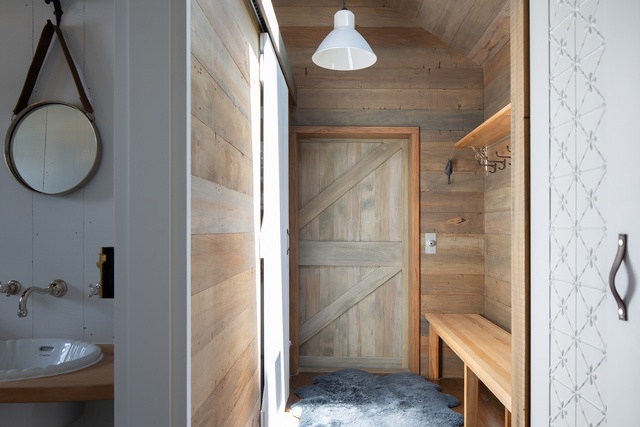
Chin certainly hasn’t gone the full ‘adhoc’ monty of using that resurfaced bath as a dining table but, as Charles Jencks pointed out, using old isn’t easy;3 hard enough to schedule all the pieces, let alone piece them together. So, collating all this with such finesse is testament to design talent and, no doubt, some serious effort in the find; but it shouldn’t feel unreal.
We all live, age, and dress up and down; so, too, our buildings. If buildings have a life, as B.V. Doshi suggests,4 then Chin and her team simply show buildings can agelessly come together and share their inbuilt adventures. It certainly teases Jane Jacob’s notion that “Old ideas can sometimes use new buildings. [But] New ideas must use old buildings.”5
Does it all feel a little restless, I wonder, bringing all these pieces and stories together and letting new be old and old be new? From far away, it doesn’t feel so and there’s proof across the paddock. Not a boat or plane, but a campervan. The vagabond cabin may have settled and found a cabin family but there seem more adventures afoot. I suspect there is more real to come. What fun.
1 Wainwright, Oliver. ‘The case for never demolishing another building’, The Guardian, theguardian.com/cities/2020/jan/13/the-case-for-never-demolishing-another-building
2 Koolhaas, Rem. Preservation is Overtaking Us, edited by Mark Wigley, Jordan Carver, Rem Koolhaas, Jorge Otero-Pailos, Planning Columbia University. Graduate School of Architecture and issuing body Preservation New York, NY: GSAPP Books, 2014.
3 Jencks, Charles, Nathan Silver. ‘Adhocism, The Case for Improvisation’, MIT Press, Cambridge, Massachusetts, 1972.
4 Balsavar, Durganand. “I realise that life is intangible, says eminent architect B.V. Doshi”, The Hindu, thehindu.com/society/i-realise-that-life-is-intangible/article19325850.ece, July 22, 2017.
5 Jacobs, Jane. The Death and Life of Great American Cities. Pelican Books. Harmonds-worth: Penguin, 1964, p 188.

